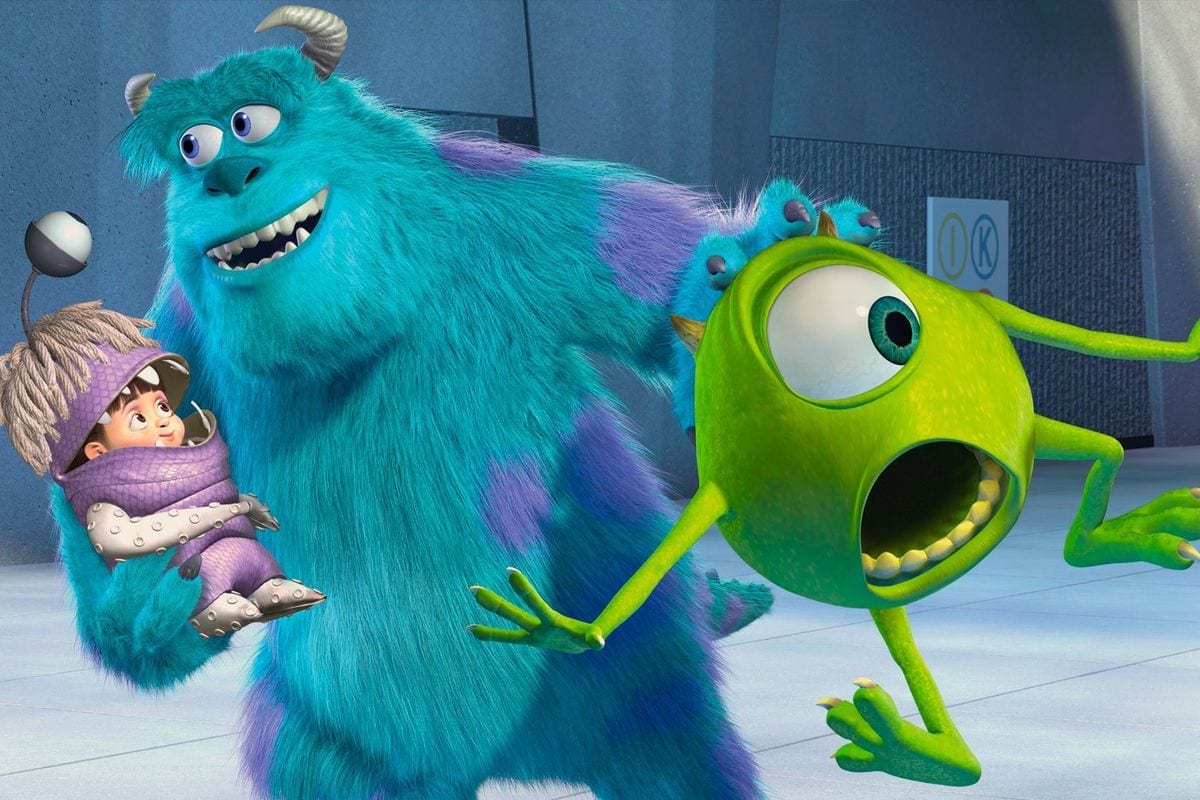As the coronavirus was officially classified a pandemic, people turned to film and TV as a means of escapism, distraction and making sense of it all.
Comparisons between the state of affairs and a slew of fiction have abounded. Some have spotted predictions of Tom Hanks’ Coronavirus infection in The Simpsons, while others have marvelled at Contagion’s unsettling resemblance to the virus’s global spread.
Monsters, Inc. even inspired a Vietnamese restaurateur to create a green ‘coronaburger’; Mike Wazowski’s spinach coloured bulbous body reminded him of the spherical COVID-19 particle.
Yet upon closer inspection, the relevance of this particular Pixar film expands beyond this playful likeness. The 2002 animation classic is set in Monstropolis and follows shaggy Sulley and cyclopean Mike, employees at the titular energy company: Monsters, Inc. Here, scaring children is not simply horror film fodder, but an essential energy supply.
Monsters creep through children’s bedroom doors while they sleep and exploit their deep-seated fears to harvest electricity. Yet, these children are themselves believed to be fatally poisonous. The company’s arachnid chairman warns: “There’s nothing more toxic and deadly than a human child. A single touch could kill you!”
The status quo is interrupted when George, a monster resembling an orange and yellow Furby, strolls back from a fear mongering foray into the human world. Unbeknownst to him, a single white sock has fastened onto the matted tresses on his back.
Spotting the sock, his partner screams the alert “23-19” and the scene breaks up into bedlam. The CDA (Child Detection Agency), a collection of mustard hazmat suits, abseil onto the scare floor to clear the contamination. George is ambushed to be promptly shaved and showered.
Beyond the fact that ‘23-19’ is eerily reminiscent of ‘COVID-19’, the reaction to these two sources of alarm is similar. A door is left on the scare floor and a child gets out: Boo, donning pig tails, a fringe and an oversized pink t-shirt. The manic reaction to Boo’s appearance in a central sushi restaurant is evocative of the feverish reaction to news of the virus: panic-buying and food hording of everything from toilet roll and hand sanitiser to bread flour and ibuprofen.
Monstropolis residents flee to their homes and Mike and Sulley squirrel Boo away in their apartment. Mike covers up with the homemade PPE of oven mitts and swimming goggles. He attempts to cajole Boo into a far-flung corner of the cramped space, while spraying all the surfaces with disinfectant. The scene culminates in Mike spraying his own mammoth eye after Boo sneezes on it.
The Monstropolis six o’clock news reporting the child breach shows interviews with monstrous residents, among whom conspiracy theories and fake news are already in circulation. The segment concludes with a bespectacled creature who says, “In my professional opinion, it is now the time to panic.”
Such ‘professional opinions’ seem to flourish during a time of crisis, much like outlandish conspiracy theories linking the coronavirus to 5G and the fake news reports that regularly drinking hot tea will kill any COVID-19 bacteria in your throat.
Of course, our source of toxic threat is genuine and potentially fatal. The film focuses on monsters who prey on childhood fears; we now have the legitimate fear of a monstrous reality that seems to have sprung from a film. The pandemic has notably brought out the best and the worst in people, just as it does in Monsters, Inc.
Mike is forced to reassess his now trivial obsessions with breaking the scare record, just as we have had to reconcile ourselves to household confinement and a hollowed out calendar. Sulley and Mike rise to the occasion and their response to the panic hints at how many are, and how even more could respond to the real and immediate danger of the coronavirus by refusing to wander down the primrose path of distress.
In Monstropolis, laughter ultimately replaces screaming: comedy superseding fear. Such an attitude is evident in the witty, warm and compassionate responses to the pandemic that have gone towards counteracting the hysterical or selfish ones.
As instructive movie manuals go, Monsters, Inc. is an unlikely choice. While films like Contagion and 14 Days Later made sense during the first weeks of lockdown, it feels as if we have now shifted into a more existentially searching phase. Our engagement with the realities of the coronavirus is cemented into daily life and we now want to know what to do with it.
Monsters, Inc. offers a superb blend of childhood nostalgia, animated distraction and good storytelling to merit a lockdown viewing. It is worth it for the dulcet ending alone. Sulley wedges the final puzzle piece into Boo’s shredded door and opens it to a dusk-lit room. The audience hears her syrupy sweet ‘Kitty’ greeting from beyond the reach of the camera.
Sulley’s face cracks open into a grin: a picture of elation, recognition and remembrance. It is a moment of re-acquaintance we can all similarly look forward to.
Words by Rebecca Cook
This article was originally published as part of The Indiependent’s May 2020 charity magazine, which is still on sale and is raising money for the British Lung Foundation. Find out more here.
